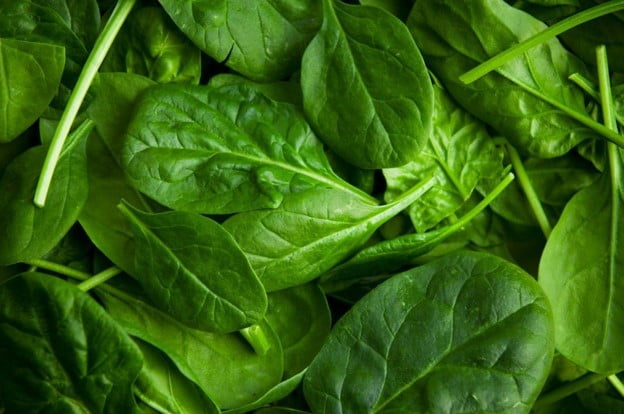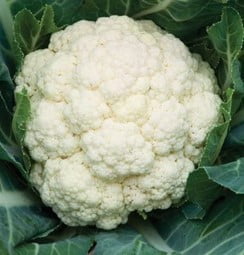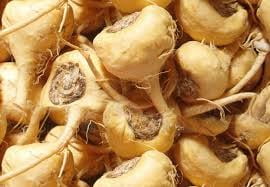Is a green, leafy vegetable that is cheap and affordable for everyone. It is a rich source of minerals, vitamins, pigments and phytonutrients. All of these together make spinach very beneficial for a number of vital processes. Due to the vast range of benefits from this vegetable, it is advisable to consume spinach on a regular basis. Spinach is a member of the Aramanthaceae family and its scientific name is Spinacia oleracea. One of the biggest reasons why spinach is so important and valued around the world is that it is very durable. It can even survive through the winter and be just as healthy in the spring.
Spinach is native to the Middle East, and was cultivated in Persia thousands of years ago. From there, it was brought east into China, approximately 1,500 years ago. It made its way into Europe a few hundred years later and quickly became a staple in a number of cultural cuisines. It can be eaten raw as a part of many salads, and it can also be cooked or sautéed down into a reduced form. This can be eaten as a side dish vegetable, or included in a number of recipes for soups, stews, and casseroles.
It has been used in various parts of the world as a medicinal plant specifically included in cooking to help increase overall health. Let’s take a closer look at why this leafy vegetable is such an integral part of our overall health.
The various health benefits of spinach are due to the presence of minerals, vitamins, pigments and phytonutrients, including potassium, manganese, zinc, magnesium, iron and calcium. Spinach is a green vegetable which has a very wide distribution. It can be grown as a back yard crop or bought from the market at affordable prices. It is a source of vitamins like folate, niacin, vitamin A, B6, C and traces of the rest of the essential vitamins. Other important elements, including thiamine and riboflavin, which are used in various reactions in our body, are also found in spinach. Spinach is also rich in pigments like beta carotene, lutein, xanthene, and chlorophyll. The best part is that spinach has a low fat content. Spinach offers a wide range of benefits to most of our physiological processes, whether consumed in raw or cooked form.
Spinach is a rich source of beta carotene, lutein and xanthene, all of which are beneficial for eyesight*. Beta carotene is supplied to the eyes by cooked spinach. It can prevent people from suffering from vitamin A deficiency, itching eyes, eye ulcers and dry eyes. This is also due to some of the anti-inflammatory properties of spinach, which can reduce the puffiness or irritation in the eyes.
Several components of spinach like potassium, folate, and various antioxidants are known to provide neurological benefits* to people who regularly consume them. According to Neurology, folate reduces due the occurrence of Neurodegenerative diseases*, so spinach is a very good idea for people who are at high risk of neural or cognitive decline*. Potassium is an integral part of brain health as well, and it has been linked to increased blood flow* to the brain, and heightened cognition*, concentration*, and neural activity*.
Spinach has a very high content of potassium and a low content of sodium. This composition of minerals is very beneficial for high blood pressure* as potassium lowers and sodium raises the blood pressure*. The folate present in spinach also contributes to the reduction of hypertension* and relaxes blood vessels*, while maintaining proper blood flow*. By reducing blood pressure* and relaxing the tension of vessels and arteries*, you can reduce stress* on the cardiovascular system* and increase oxygenation to the body’s organ systems for optimal functionality*.
Nutrition Facts
Organic Spinach leaf powder
Nutrition Facts 100 grams
Amount Per Serving
Calories 230
Total Fat 0g
Saturated Fat 0g
Trans Fat 0g
Cholesterol 0mg
Sodium 790mg
Potassium 5582mg
Total Carbohydrate 41g
Dietary Fiber 21g
Sugars 0g Added 0 sugar
Protein 21g
Vitamin A 93730 IU
Vitamin D 0 mcg
Calcium 917 mg
Iron 21 mg
Vitamin C 94 mg
*Percent Daily Values are based on a 2000 calorie diet. Your daily values may be higher or lower depending on your calorie needs.
Ingredients: Organic Spinach leaf powder
References
- Asai A, Terasaki M, Nagao A. An epoxide-furanoid rearrangement of spinach neoxanthin occurs in the gastrointestinal tract of mice and in vitro: formation and cytostatic activity of neochrome stereoisomers. J Nutr. 2004 Sep;134(9):2237-43. 2004. PMID:15333710.
- Asai A, Yonekura L and Nagao A. Low bioavailability of dietary epoxyxanthophylls in humans. Br J Nutr. 2008 Aug;100(2):273-277. 2008.
- Chung HY, Rasmussen HM, Johnson EJ. Lutein bioavailability is higher from lutein-enriched eggs than from supplements and spinach in men. J Nutr. 2004 Aug;134(8):1887-93. 2004. PMID:15284371. • Edenharder R, Keller G, Platt KL, Unger KK. Isolation and characterization of structurally novel antimutagenic flavonoids from spinach (Spinacia oleracea). J Agric Food Chem 2001 Jun;49(6):2767-73. 2001. PMID:12950.
- Gates MA, Tworoger SS, Hecht JL, De Vivo I, Rosner B, Hankinson SE. A prospective study of dietary flavonoid intake and incidence of epithelial ovarian cancer. Int J Cancer. 2007 Apr 30; [Epub ahead of print]. 2007. PMID:17471564.
- genannt Bonsmann SS, Walczyk T, Renggli S et al. Oxalic acid does not influence nonhaem iron absorption in humans: a comparison of kale and spinach meals. Eur J Clin Nutr. 2008 Mar;62(3):336-41. Epub 2007 Apr 18. 2008.
- Longnecker MP, Newcomb PA, Mittendorf R, et al. Intake of carrots, spinach, and supplements containing vitamin A in relation to risk of breast cancer. Cancer Epidemiol Biomarkers Prev 1997 Nov;6(11):887-92. 1997. PMID:12980.
- Lucarini M, Lanzi S, D’Evoli L et al. Intake of vitamin A and carotenoids from the Italian population–results of an Italian total diet study. Int J Vitam Nutr Res. 2006 May;76(3):103-9. 2006. • Makiko I, Mutsuko T, and Takashi N. Influence of the Amount of Boiling Water on the Sensory Evaluation, Oxalic Acid and Potassium Content of Boiled Spinach. Journal of Cookery Science of Japan 2005, 38(4):343-349. 2005.
- Manach C, Scalbert A, Morand C, Rémésy C, Jiménez L. Polyphenols: food sources and bioavailability. Am J Clin Nutr. 2004 May;79(5):727-47. 2004. PMID:15113710.
- Morris MC, Evans DA, Tangney CC, Bienias JL, Wilson RS. Associations of vegetable and fruit consumption with age-related cognitive change. Neurology. 2006 Oct 24;67(8):1370-6. 2006. PMID:17060562.
- Okazaki K, Oka N, Shinano T et al. Differences in the metabolite profiles of spinach (Spinacia oleracea L.) leaf in different concentrations of nitrate in the culture solution. Plant Cell Physio. 2008 Feb;49(2):170-7. Epub 2007 Dec 17. 2008.
- Song W, Derito CM, Liu MK et al. Cellular antioxidant activity of common vegetables. J Agric Food Chem. 2010 Jun 9;58(11):6621-9. 2010.
- Tang G, Qin J, Dolnikowski GG et al. Spinach or carrots can supply significant amounts of vitamin A as assessed by feeding with intrinsically deuterated vegetables. Am J Clin Nutr. 2005 Oct;82(4):821-8. 2005.
- Wang Y, Chang CF, Chou J, Chen HL, Deng X, Harvey BK, Cadet JL, Bickford PC. Dietary supplementation with blueberries, spinach, or spirulina reduces ischemic brain damage. Exp Neurol. 2005 May;193(1):75-84. 2005. PMID:15817266.
- Yang Y, Marczak ED, Yokoo M, Usui H, Yoshikawa M. Isolation and antihypertensive effect of angiotensin I-converting enzyme (ACE) inhibitory peptides from spinach Rubisco. J Agric Food Chem. Aug 13;51(17):4897-902. 2003.
Spinach contains an antioxidant known as alpha-lipoic acid, which has been shown to lower glucose levels, increase insulin sensitivity and prevent oxidative stress-induced changes in patients with diabetes*. Studies on alpha-lipoic acid have also shown decreases in peripheral neuropathy* and/or autonomic neuropathy in diabetics.1
Most studies have used intra-venous alpha-lipoic acid and it is unsure whether oral supplementation would elicit the same benefits.1
Spinach and other green vegetables contain chlorophyll which has shown to be effective at blocking the carcinogenic effects of heterocyclic amines* which are generated when grilling foods at a high temperature.2
because of its high potassium content, spinach is recommended to those with high blood pressure to negate the effects of sodium in the body. A low potassium intake may be just as big of a risk factor in developing high blood pressure as a high sodium intake.3
Other high potassium foods include potatoes, tomatoes, lima beans and oranges.
Low intakes of vitamin K have been associated with a higher risk for bone fracture. Adequate vitamin K consumption is important for good health, as it acts as a modifier of bone matrix proteins, improves calcium absorption and may reduce urinary excretion of calcium.4
Spinach is high in vitamin A, which is necessary for sebum production to keep hair moisturized. Vitamin A is also necessary for the growth of all bodily tissues, including skin and hair. Spinach and other leafy greens high in vitamin C are imperative for the building and maintenance of collagen, which provides structure to skin and hair*.
Iron-deficiency is a common cause of hair loss*, which can be prevented by an adequate intake of iron-rich foods, like spinach.
1- “Alpha-Lipoic Acid”. Nutrition 411. Last reviewed August 2012. Accessed December 20, 2013.
2- Machowsky, Jason, MS, RD, CDN, CSCS. “Anticancer Compounds Found in Food”. Nutrition 411. Last reviewed February 2012. Accessed December 20, 2103.
3- “Low Potassium Linked to High Blood Pressure” American Society of Nephrology. Release date November 2008. Accessed December 20, 2013.
4- “Bone Health: Looking Beyond Calcium” Nutrition 411. Last reviewed March 2009. Accessed December 20, 2013.
*These statements have not been evaluated by the Food and Drug Administration. These products are not intended to diagnose, treat, cure or prevent any disease.











Reviews (0)
There are no reviews yet.